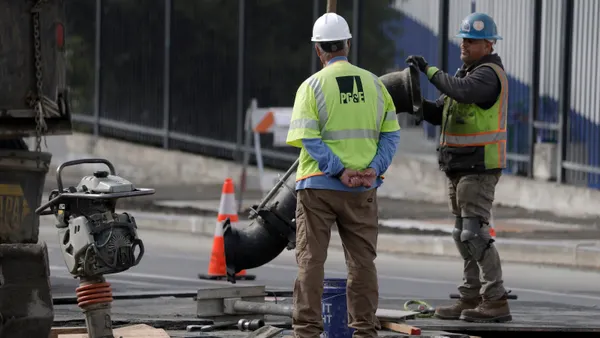Pre-apprenticeship initiatives were critical pathways into skilled trade careers across Illinois in recent years, helping to address ongoing labor shortages in the construction industry. That’s according to a recently released study by the Illinois Economic Policy Institute.
The report focused on Illinois’ two major pre-apprenticeship initiatives — the Highway Construction Careers Training Program and the Illinois Works Pre-Apprenticeship Program.
From 2017–2023, HCCTP enrolled 2,500 participants, graduated 1,900 and placed 1,000 into construction apprenticeships or related jobs. Meanwhile, from 2022-2024, the Illinois Works Pre-Apprenticeship Program enrolled 3,300 participants, graduated 1,600 and placed 1,100 in similar opportunities. Together, the programs accounted for about 5% of all new Illinois construction apprentices and a much larger share of Black (35%) and women (21%) apprentices statewide.
By comparison, about 6.5% of all construction workers nationwide were Black in 2024, according to U.S. Bureau of Labor Statistics Data, and about 11.2% of all U.S. construction workers were women.
“It’s not complicated, it shows the pre-apprenticeship programs work,” said Robert Anthony Bruno, director of the labor education program at the University of Illinois Urbana-Champaign and co-author of the report. “With the advantages that the pre-apprenticeship programs provide, they really allow an expanding group of workers who otherwise haven’t been well represented in trades to find opportunity. It’s greater access to skilled workers in an industry that tends to suffer from shortages and missed opportunities.”
Pre-apprenticeship programs provide tuition-free training, ensuring that aspiring tradespeople can develop their skills without financial barriers. Therefore, this approach not only benefits workers but also supplies contractors with a steady pipeline of skilled labor.
Bruno points to the data, which shows that between 2017 and 2024, Illinois enrolled more than 40,000 new construction apprentices, with 96% participating in joint labor-management programs affiliated with unions. These union-based apprenticeships have demonstrated higher success rates, boasting a 65% completion rate, which is more than double the 29% completion rate among nonunion, employer-only programs.
“When you see percentage increases that are double digits, that’s a robust and sizable increase and exhilarating for the industry,” Bruno said. “These investments are not only in the physical infrastructure, but it recognizes the need to invest in the labor force.
‘The best 360-approach’
Norman Ruano, deputy director of the Office of Illinois Works at the Illinois Department of Commerce and Economic Opportunity, noted that since Gov. JB Pritzker took office, there has been progress toward creating a qualified talent pipeline for the state’s construction trades.
“Since launch, we have seen a steady growth in program participation, particularly from individuals who have been historically underrepresented in the construction trades which we believe is a result of being intentional with our investments and initiatives,” Ruano said via email.
Ruano said that since 2022, the percentage of labor hours performed by apprentices on Illinois Works-eligible capital projects (those funded by state appropriated capital dollars that are at least $500,000 in estimated costs) grew from 11% to 17%.
“In the same period, the percent of apprentices who are women, persons of color or veterans working on those projects increased,” Ruano said.
Bruno called these apprenticeship-readiness programs “the best 360-approach” for growing the industry and should serve as a model for how the U.S. builds things going forward.
“These programs prove you can bring people of color and women into the trades, as there’s not a lack of interest,” Bruno said. “The hope is five to 10 years from now, you really do see a greater use of this and perhaps see some significant changes in the diversity of the workforce. This is just adding workers that are needed into the pipeline.”














